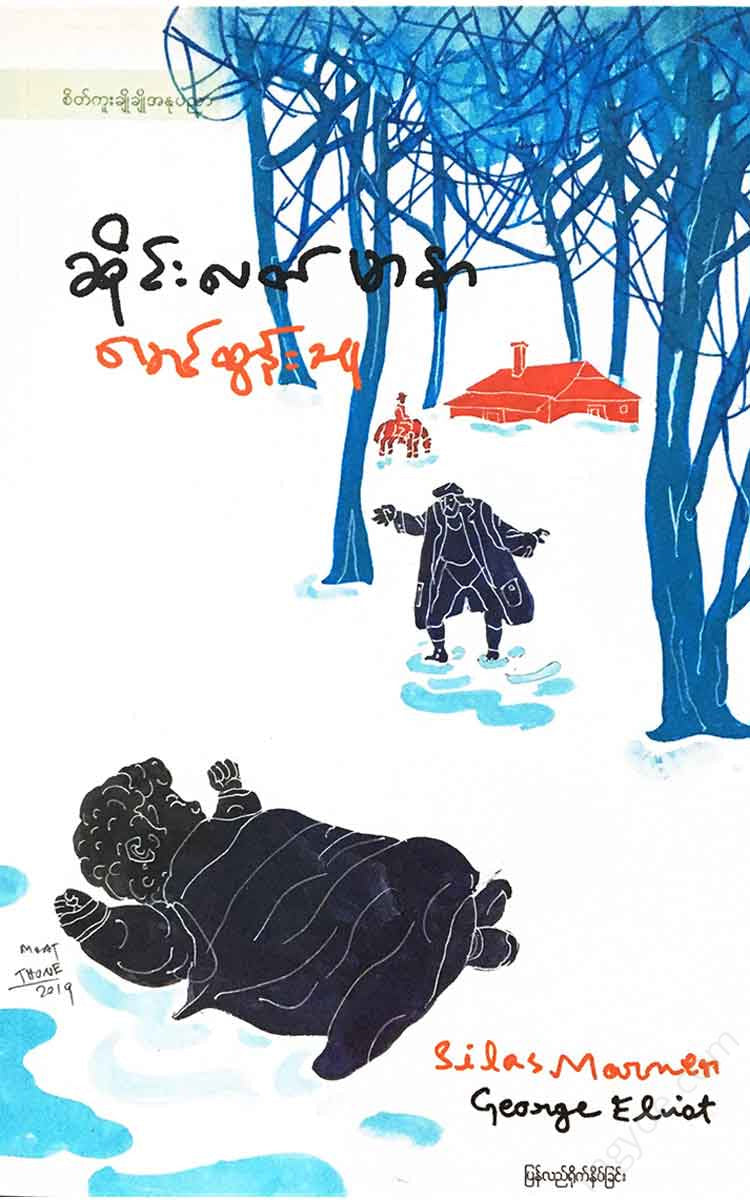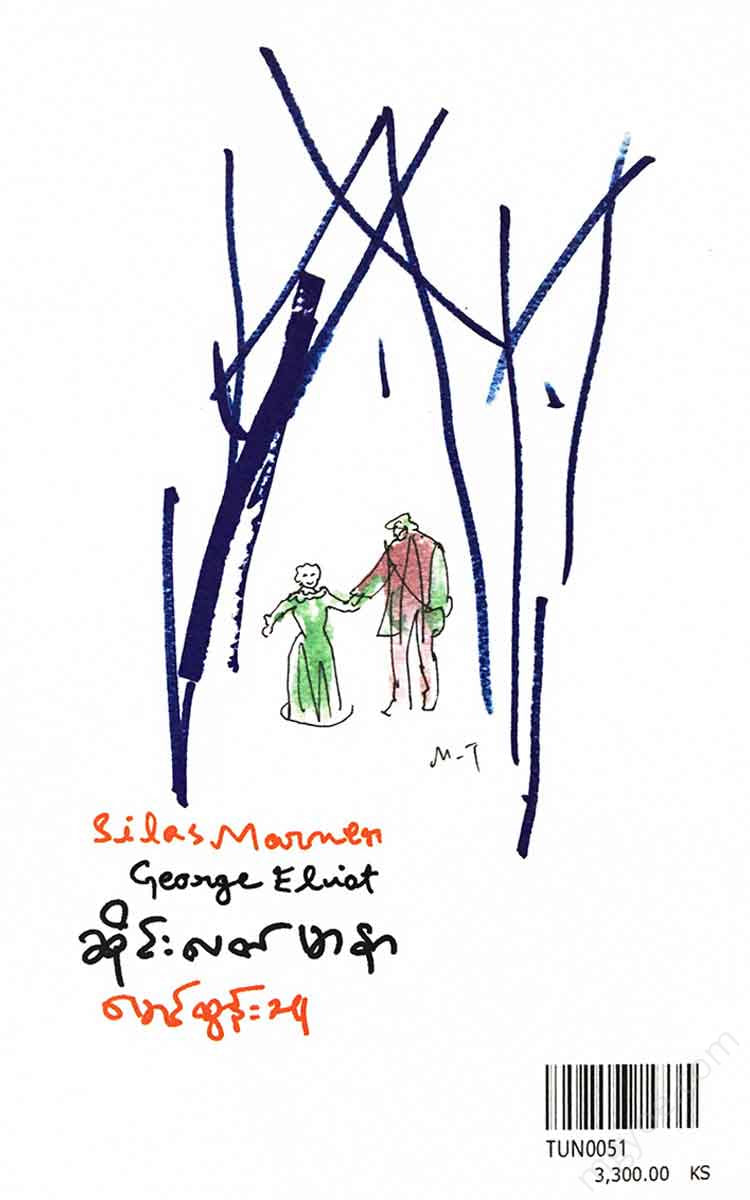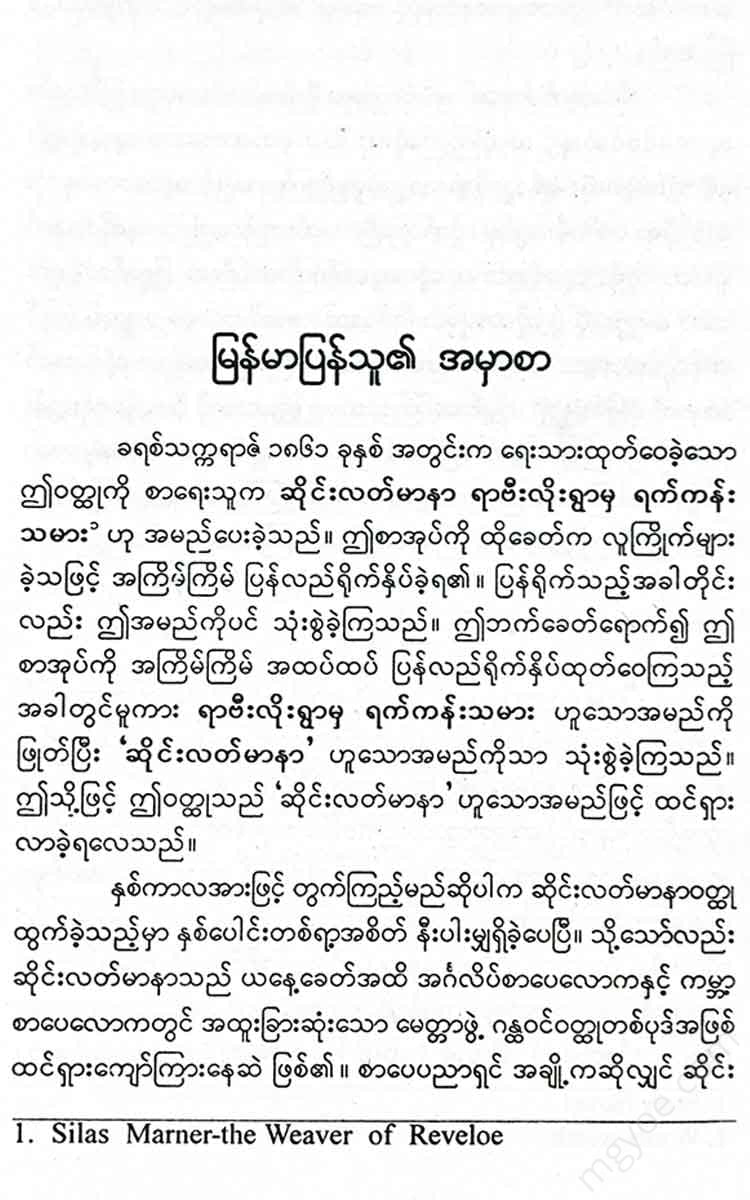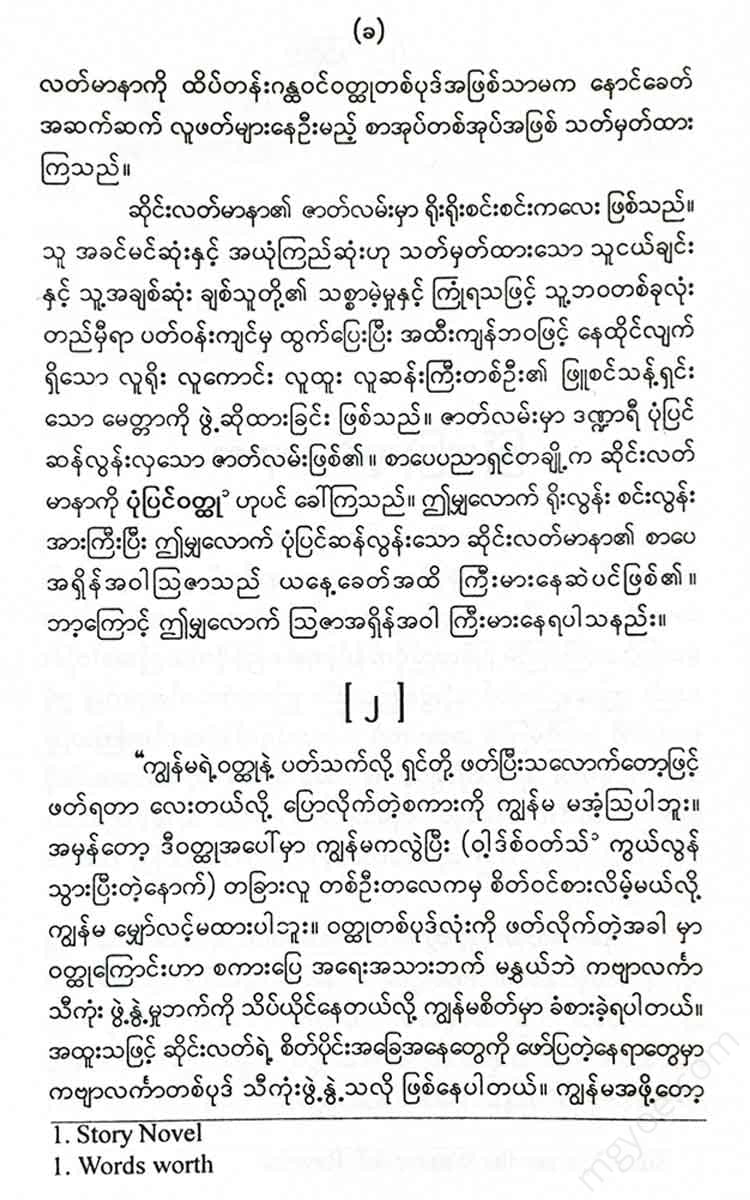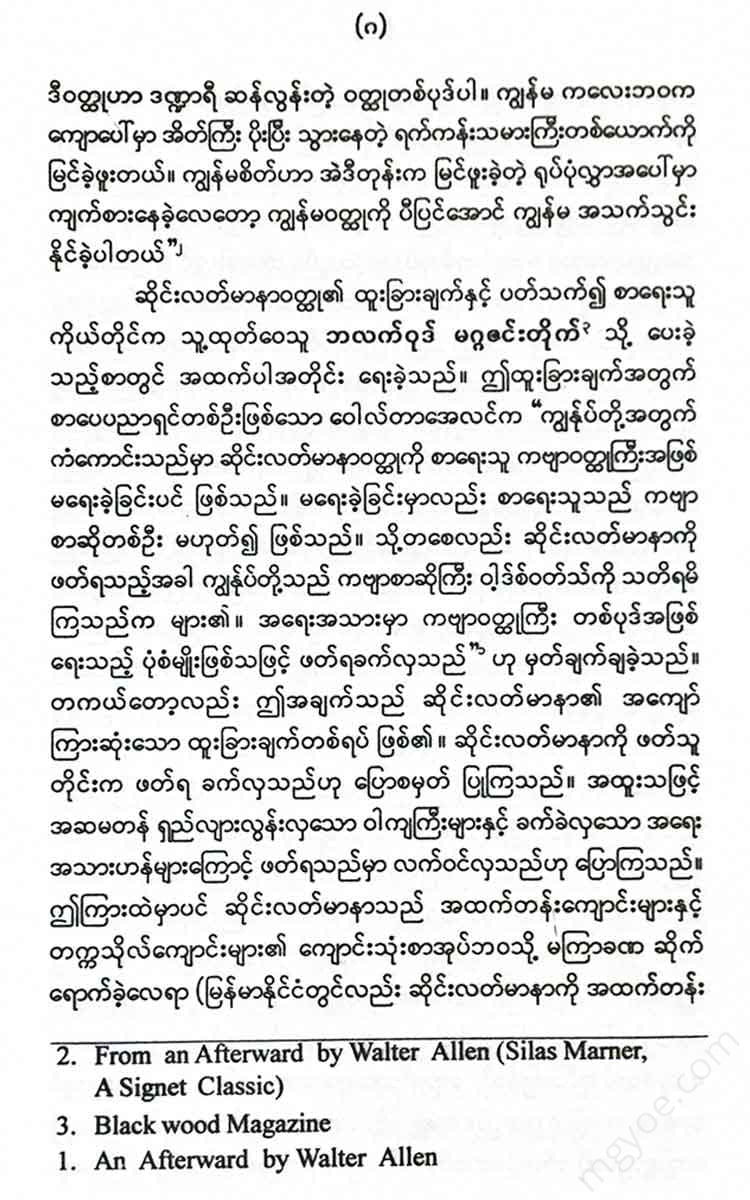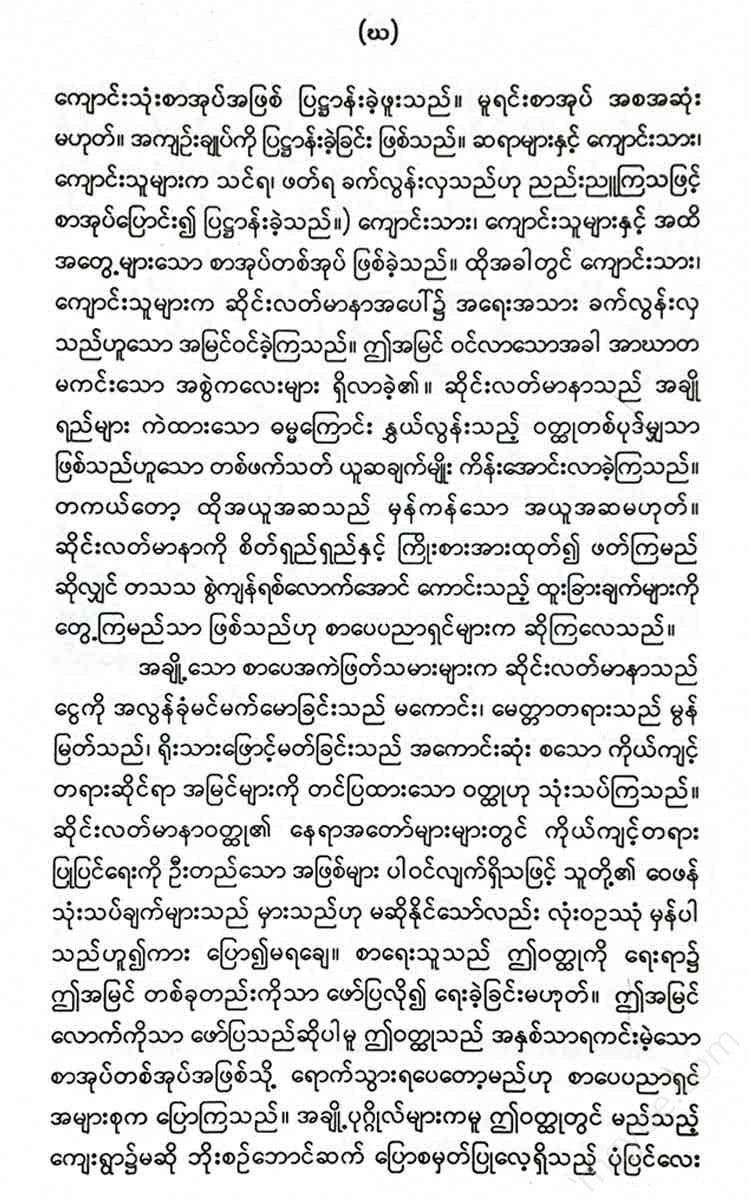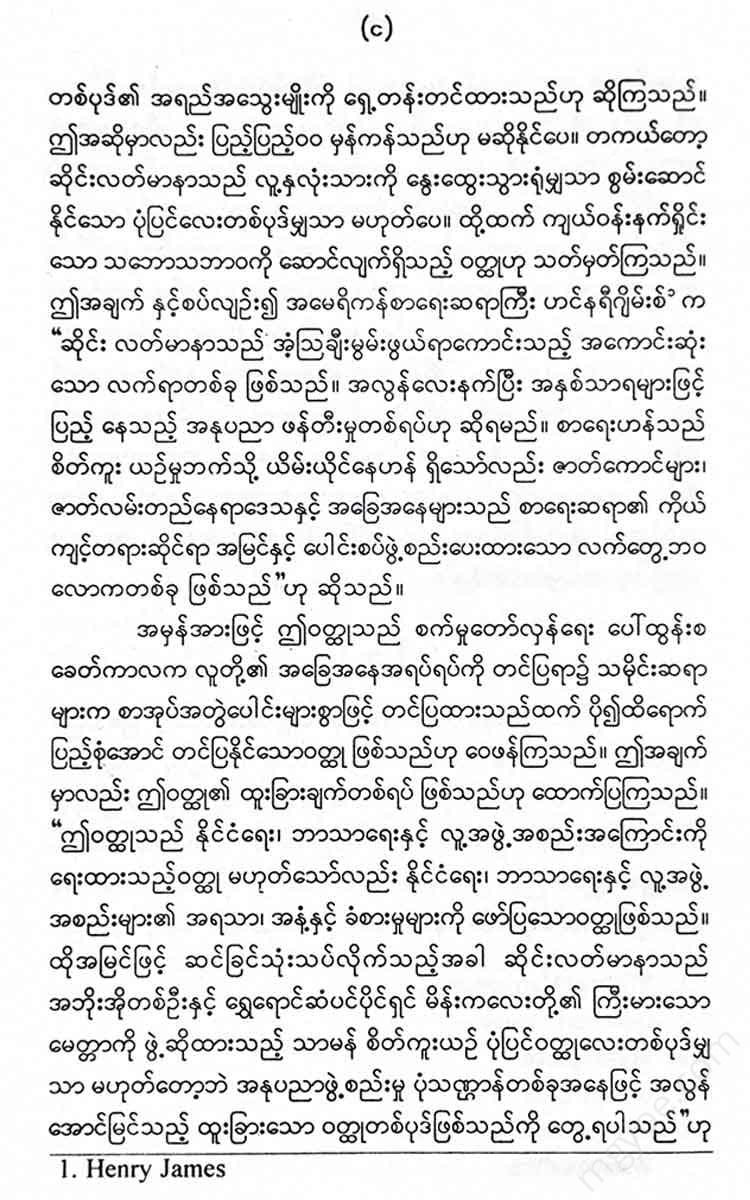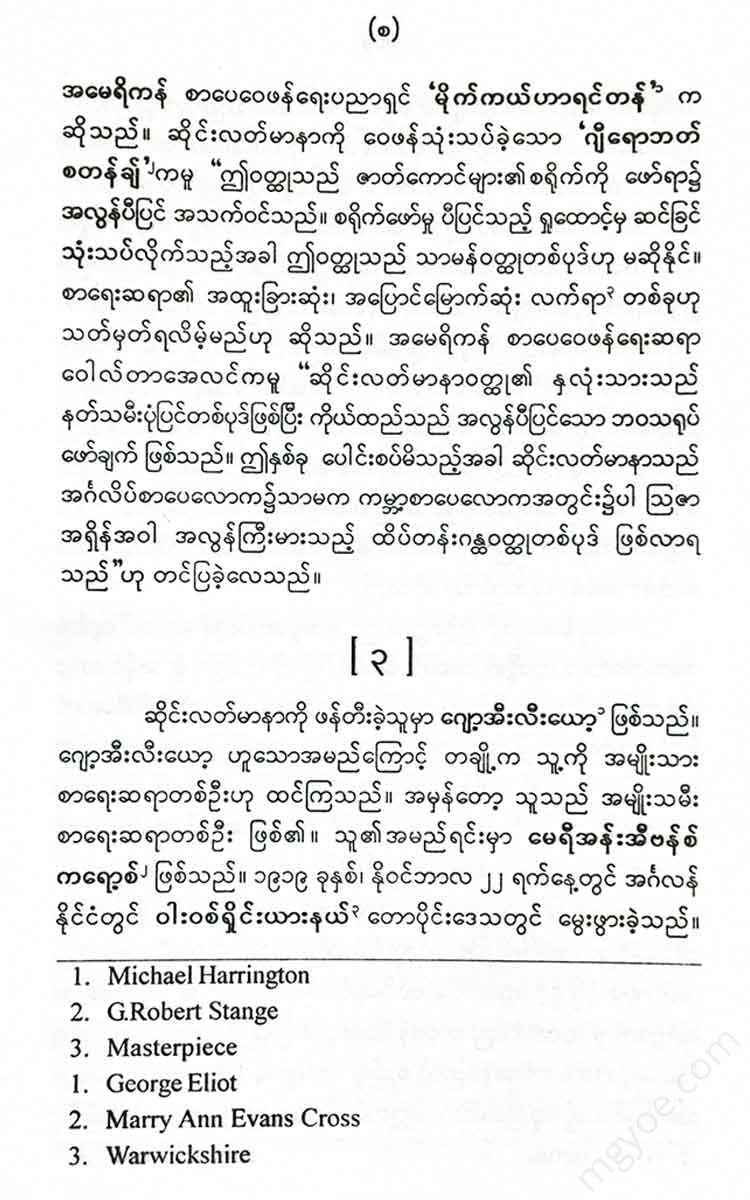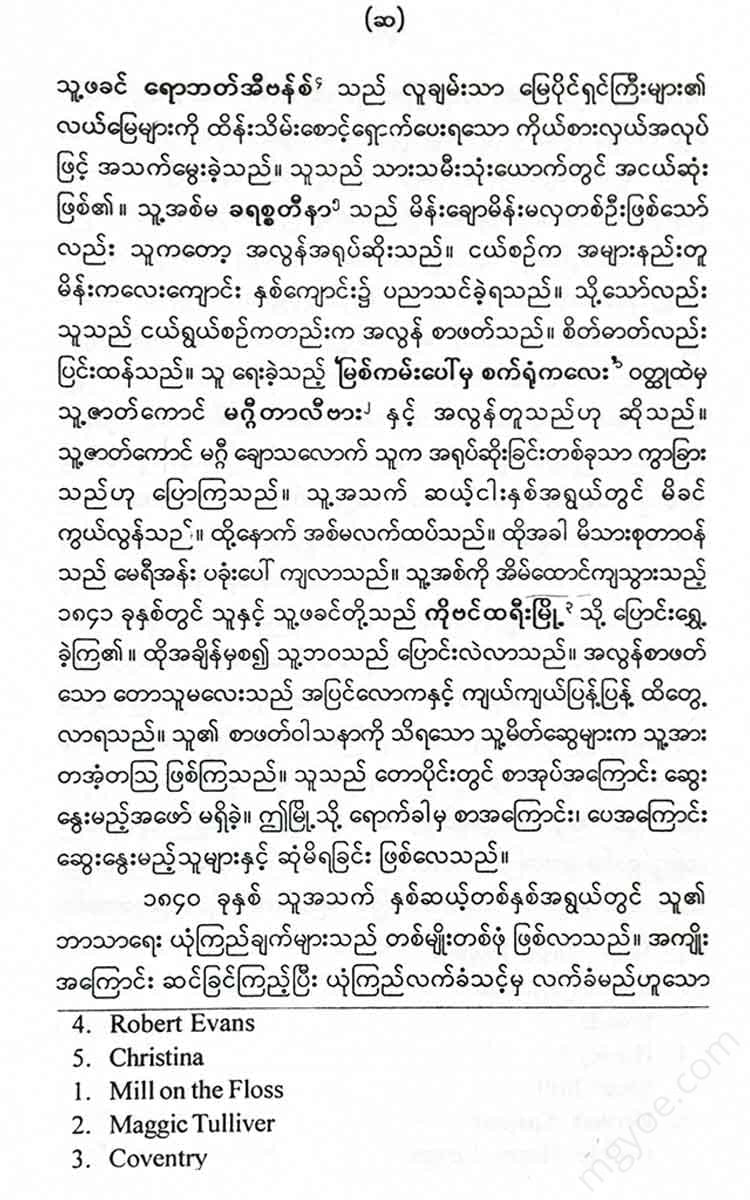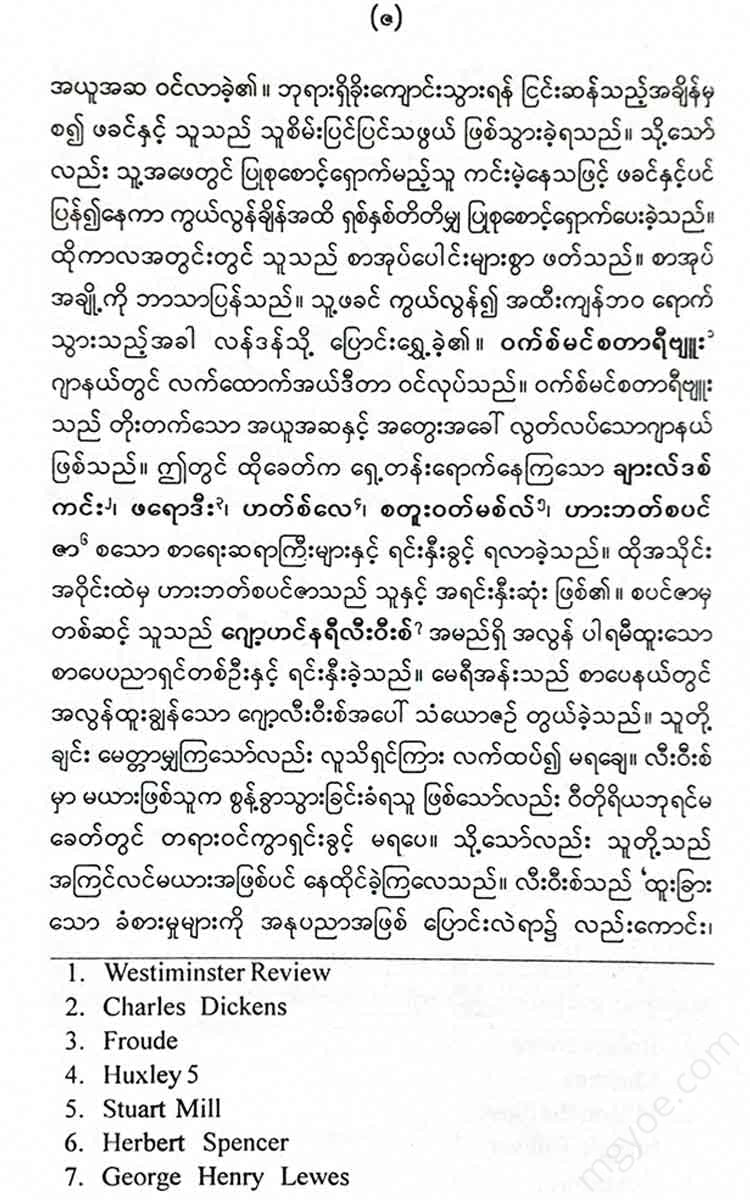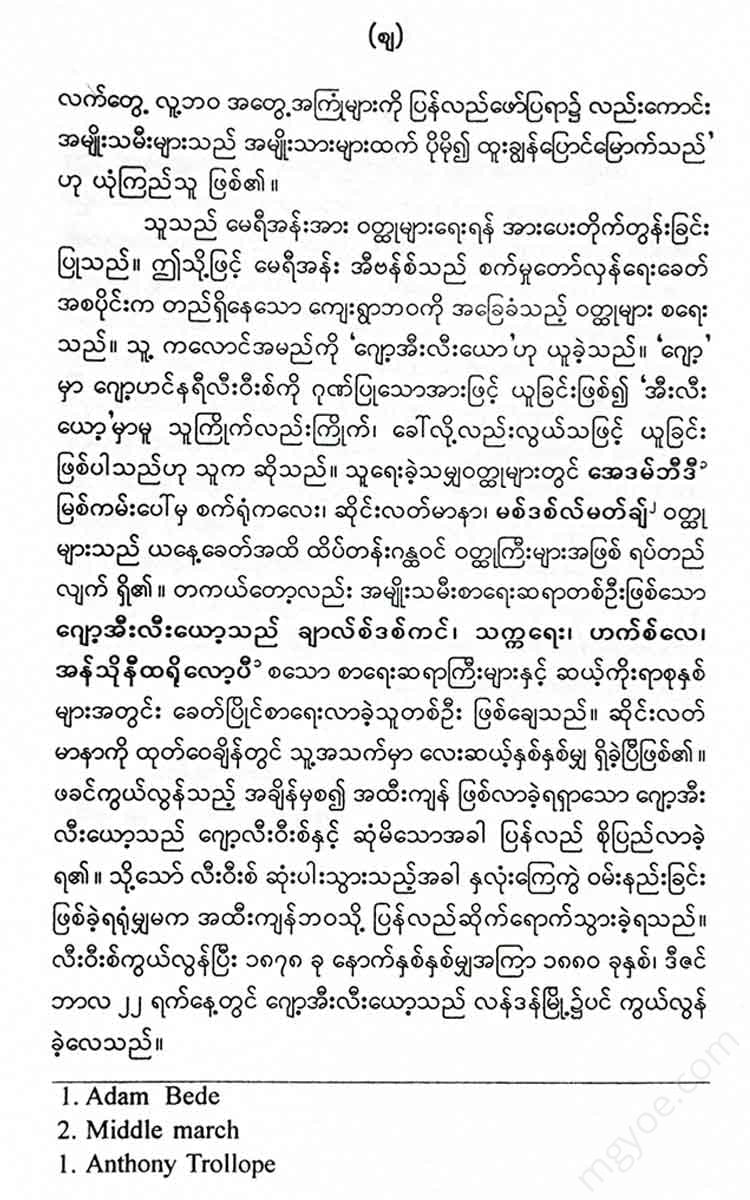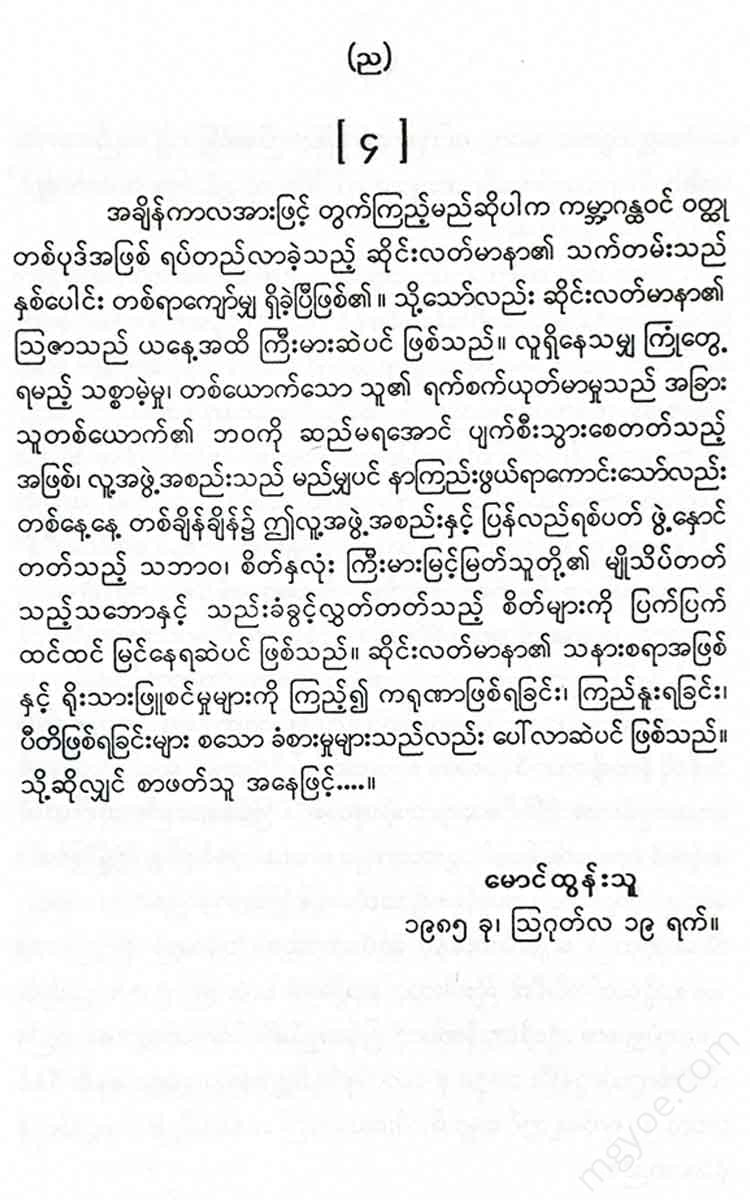စိတ်ကူးချိုချိုစာပေ
Maung Tun Thu - Sai Lat Mana
Maung Tun Thu - Sai Lat Mana
Couldn't load pickup availability
Once upon a time in England, there was a time when the constant hum of spinning wheels could be heard from the homes of farmers.
In those days, in the remotest parts of the country, people would often be seen wandering the streets of the jungle, thin and pale, looking like the remnants of a long-extinct tribe.
In the early hours of winter, when the shadows fall early, the shepherd's dog, when he saw this man walking slowly with his back to the setting sun, would be startled and bark incessantly. The dark figure, carrying a large, heavy pack on his back, seemed to have a terrifying look in the dog's eyes.
The shepherd, who had seen and encountered this kind of person, knew the man very well. He also knew that there was nothing in the man's pack except for the yarn and the linen. He also knew the man's condition when he went without the pack. Even though he knew this, the shepherd's mind would still think that the man could only have been helped by an evil being to carry such a heavy pack and travel such a long distance.
In those days, superstition and superstition were everywhere. People were not very intelligent and knowledgeable, so when something unusual or something happened around them, it seemed strange to them. Sometimes they had a certain idea and became superstitious. The people of the mountains at that time did not understand the objects and events outside their area. For them, even moving from one village to another, living as nomads, was a very strange task.
These people who travel like this don't know where or what region they come from. They tend to think that they are like swallows that disappear in the winter and reappear in the spring.
In keeping with the ancient customs of the villagers, they were distrustful of strangers they had never met or seen before. Even if someone moved to the village permanently, they were suspicious if they came from a distant land. No matter how long they stayed in the village, they did not mix with other people. Therefore, the weavers who had moved from the city to the forest at that time were strange people with strange behaviors in the eyes of the villagers. Even after staying in the village for a long time, no one recognized them as villagers. They were treated as strangers. In this way, the weavers built their own world and lived in isolation.
In the early years of that century, a weaver named Sailat Mana lived near Ravilosha, making a living by his skilled weaving. His small house, built of stones, was not far from a stone well that the villagers no longer used. A fence, filled with trees and shrubs, surrounded it on all sides, seemed to protect it from the public.
The sound of Sailatmana's weaving is a very strange sound to the ears of the villagers of Ravilo. It is not as pleasant as the sound of the threshing machine and the rice planting machine they are used to. The sound of Sailatmana's weaving is a very strange and surprising sound not only for adults but also for children. Especially the boys in the village, as is the nature of children, go out of the village and go between the fences and bushes to look for fruits, pick birds' eggs, etc. At such times, their group often comes near Sailatmana's house by chance. Their ears can clearly hear the sound of Sailatmana's weaving. The sound of the weaving is a very interesting sound for them. At that time, they always have the desire to watch Sailatmana weaving.
Then they would sneak up on the house, climb through the window, and peek inside. For the children, Mana's behavior was a very strange and wonderful thing.
Mana held her waist and kept her eyes fixed on the movements of her loom. Her expression showed no interest in anything else but her loom. However, sometimes, when the thread on the loom broke, Sailat Mana's attention would turn to her surroundings. At such times, she would notice the children watching her closely.
He didn't like being disturbed like this. He immediately got down from the loom, opened the door, and went outside, looking at the children with his fierce, fierce eyes, as if he were about to eat or chew. With just one look at Mana, the children were terrified and ran away, their heels and hips together.
The reason the children ran away in fright was not because of the bulging eyes that stared out from Sai Latmana's pale face. Sai Latmana was a very poor man. His eyes could not see anything clearly unless he looked closely. In fact, his eyes were unable to see the children clearly.
In any case, it is not without reason that children run away at the mere sight of him. The children of Ravilo village have heard only a few words about Sailatmana from their parents.
They had heard from their elders that if Sailatmana had the will and the willingness to heal, she could cure the arthritis patients in the village, and that the cure was possible because she had contact with evil spirits, and that Sailatmana was always making offerings to evil spirits.
It has also been said that if only Sailat Mana, who is friends with demons, could communicate well, the sick in the village would be able to pay less for the doctor's treatment.
In any case, these words are words that terrify the minds of children. Because of these words, the children run away without letting Sailatmana approach them.
Ravilo is a village buried under decaying old ideas, prejudices, and superstitions. New ideas have not been able to penetrate the people of Ravilo. This is not because it is outside the area where modern ideas have developed, nor because it is located in a very hot and dry region. Ravilo is located in an agricultural area.
It is a very peaceful area, filled with lush green meadows. It is a region that many people recognize as a happy place.
However, Ravello is a village located in a valley covered by a large forest. It takes about an hour to reach the village by horseback from the highlands. It is not easy for unique and innovative ideas from the outside world to reach this village.
The village is in a good condition. At the top of the village is an old church. In the middle of the church is a large cemetery. There are two or three large houses in the village that can be called good houses. These houses are located on the front side of the road and face the road. Each of these houses has a large, well-maintained garden. In the garden, wind chimes are flying. The pastor's house seems to be looking out from the forest on the other side of the cemetery.
For an experienced person, just by looking at the position of the village, one can immediately guess the social condition of the village. There are not many large farms and mansions in the village. However, there are many heads of households who do not want to work hard at farming. They are content with whatever they get. They consider their life to be complete if the income they get from farming is enough to eat and wear properly and to spend it happily on festive occasions such as Christmas, Lent, and Easter.
Sailat Mana arrived in Ravilo village fifteen years ago. The villagers of Ravilo village do not know where Sailat Mana came from. When he arrived, Sailat Mana was a young man. His skin was pale and pale. His most distinctive and prominent feature was his brown eyes, which were slightly dull and dull. To those with a little knowledge, Sailat Mana was not an extraordinary person. He was just an ordinary person like me. However, to the villagers in the surrounding area where he lived, Sailat Mana was a strange person. For the people who knew him, it was not only his job that was unusual. His mannerisms and behavior were also unusual.
Since arriving near Ravilo village, Sailatmana did not mix with the villagers. He did not show any signs of being friendly with the villagers. He did not visit anyone's house. He did not invite anyone to his house. He himself visited the village. The "Rainbow Restaurant" in Ravilo village was a crowded place. However, Sailatmana came to that restaurant with a lazy attitude and did not even drink a glass of wine. The house of the cart maker in the village, who made and sold carts and cart accessories, was a place where many villagers met, gossiped, and exchanged news. Sailatmana did not visit that place either.
She does not have a male companion. She does not seek a female companion. She rarely goes out of the house. She spends all her time busy with her loom. Only occasionally does she go out for her work or to buy essentials for her household.
These actions of Sailatmana, Sailatmana's face, which was so colorless, Sailatmana's eyes, which were so beautiful that no one could compete with them, all of these things were interesting and surprising to the villagers of Ravilo. They were also very suspicious. To them, everything was a mystery. In the midst of this, another reason for suspicion about Sailatmana had surfaced again.
One evening, a village farmer named Jean Rodney, who was returning from a hunting trip, met Sailat Mana on the road. Sailat Mana was standing tall, leaning against a post on the stairs that led up to the village fence. He was carrying a heavy load on his back.
